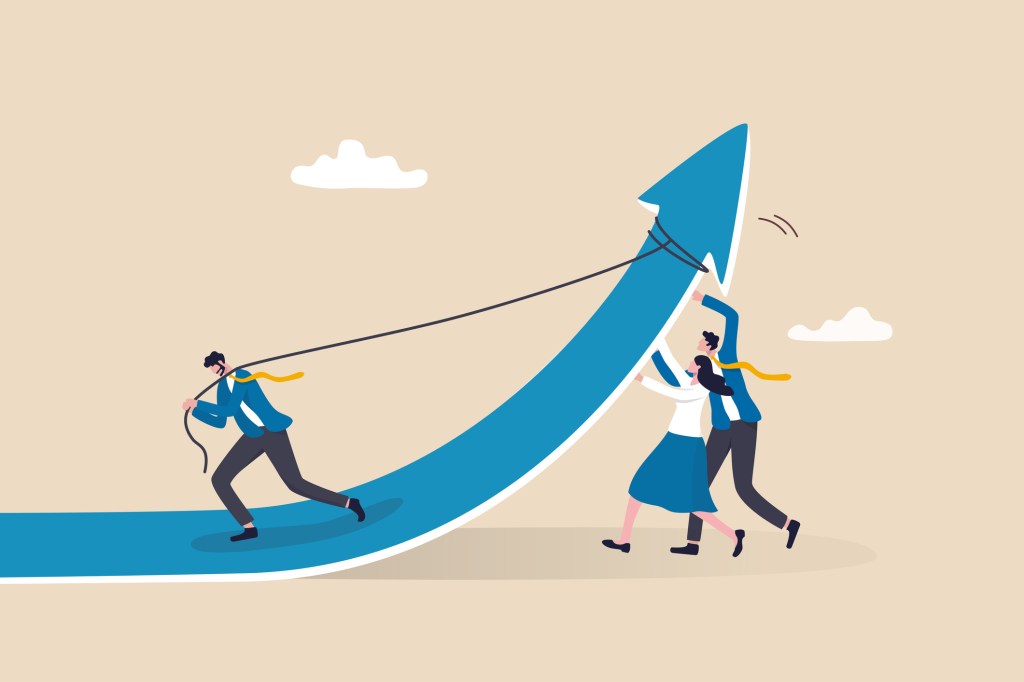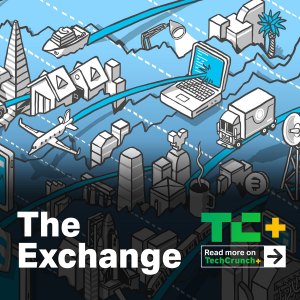
It’s been a long time since Salesforce helped change the world of technology by claiming it was going to end software. Its model of selling access to a managed service that was hosted on the cloud (what we generically call software as a service today, or SaaS) didn’t end software, of course, but it did turn the world away from buying software in a box.
The trade-offs were simple. Software offered as a service was cheaper upfront but could cost more over time. In return, vendors promised regular updates and you never had an out-of-date version. No matter how you feel about the subscription economy, the shift from buying Microsoft Office in a box to renewing your Microsoft 365 subscription online is now part of our past.
The Exchange explores startups, markets and money.
Read it every morning on TechCrunch+ or get The Exchange newsletter every Saturday.
Salesforce’s model of selling access to its software services on a subscription basis was imperfect. All business models are, but what some folks realized was that while SaaS and its ilk were tidy profit centers for vendors, their costs could wind up misaligned with buyers’ needs. For example, if you pay for more seats than you use, or some of your paid seats only use the service a little bit, you could wind up paying for more software than you really needed.
Enter usage-based pricing, which involves charging for software based on how much of it was consumed. Just like how SaaS products ate up older software sales models, some folks thought that consumption-based pricing would be the next thing. Indeed, Twilio grew to mammoth size on the back of the model, carving a Salesforce-like path forward for startups. From the “end of software” to “ask your developer,” it seemed the future of software pricing was up for grabs, especially during the last venture boom.
Then the economy turned and tech companies suddenly had to deal with customers looking to lower their bills. Based on our read of SaaS companies’ quarterly reports, it seems that while all software companies had some soul-searching to do mid-2022 onward, consumption-based models were hit the hardest. That’s perhaps why Salesforce’s founder is still its CEO, while Twilio’s isn’t.
 But what about the future? What should startups know today about how they charge for their software products, and how that choice will impact their growth prospects? New data from Maxio — formed out of the merger of two Battery Ventures–backed startups, SaaSOptics and Chargify — indicates that both consumption and subscription pricing have their advantages when it comes to growth, but not at the same time. Smaller software companies do better with subscription pricing, while consumption-based models perform better at larger scale. There’s no perfect answer, in other words, but the data should help founders make the right call for their company.
But what about the future? What should startups know today about how they charge for their software products, and how that choice will impact their growth prospects? New data from Maxio — formed out of the merger of two Battery Ventures–backed startups, SaaSOptics and Chargify — indicates that both consumption and subscription pricing have their advantages when it comes to growth, but not at the same time. Smaller software companies do better with subscription pricing, while consumption-based models perform better at larger scale. There’s no perfect answer, in other words, but the data should help founders make the right call for their company.
The new normal
Before we dive into the comparative performance of the two main SaaS pricing models, let’s talk about the business environment all SaaS startups operate in today: Whether they charge on a consumption or subscription basis, companies will need to get used to what many would have considered as subpar growth not so long ago.
Then again, the growth levels we are seeing may well be the new normal, and maybe hypergrowth was the anomaly all along. That’s certainly Maxio’s take:
Our analysis suggests the growth rates observed throughout 2023 are here to stay for the foreseeable future. We believe the market is returning to normalized growth levels after experiencing a period of abnormal growth and fluctuation. This period of abnormal growth continues to weigh heavily throughout the private technology and subscription sectors.
We are used to hearing that maybe we should just forget about 2021 altogether, but Maxio’s argument is backed by data, or at the very least, reasonably inferred from it.
“While we observed modest improvement in growth rates throughout Q2 and Q3 of 2023,” the report noted, “growth rates for subscription businesses processing up to $100MM leveled off and slightly declined to finish the year at 14% growth in Q4, a 6% decline from the same period in Q4 2022.”
The fact that SaaS companies’ revenue growth didn’t pick up during 2023 seems to indicate that things are unlikely to return to ZIRP-era levels any time soon, even as inflation starts to show signs of slowing. However, there’s still a pretty wide range of growth rates that startups can expect, depending on their billing model, their sector and other variables.
Benchmarks
In Q4 2023, and in line with previous quarters, the average growth rate of B2B SaaS businesses with annual revenue of less than $1 million was much higher if they charged subscriptions (34%) than if they employed usage-based pricing (only 1%). However, the tables turn above the $1 million annual revenue threshold: Consumption-based businesses grew by 22% on average last quarter, compared to 16% for subscription-based ones.
But it’s relevant to also examine how growth varied each quarter for companies that used these models. For companies above the $1 million revenue threshold, Maxio found that those with consumption-based models saw their growth stall sooner in 2022, but after the market turned in 2023, they grew faster than companies with subscription-based models.
So, what to do if you are a startup? Data is descriptive in this case, not proscriptive. The report posits that consumption-based pricing results in more or less 0% growth for small companies. However, Jonathan Cochrane, Maxio’s VP of strategy, told TechCrunch+ that those figures could be partially impacted by some companies offering consumption-priced goods that Maxio can track, and other services that it can’t.
Even with that caveat, the data is pretty clear: The larger a consumption-based software company gets, the faster it grows until it crests the $50 million annual revenue mark. In contrast, subscription-based software companies often grow faster when scaling to annual revenue of $2 million, decelerate until they reach the $20 million to $50 million bracket, and then settle into middling growth thereafter.
Damned if you do, damned if you don’t, yeah? In a nutshell, there’s no perfect pricing model for all stages of a startup’s life. The trade-offs will hit you earlier, in the middle of the growth curve, or later. Perhaps the takeaway here is that founders should sort out what fundraising tranche is the hardest to land — Series A, Series C, etc. — and choose the pricing model that will allow them to be strongest at that point? Of course, that would only hold up as long as the market itself holds still, but that’s not likely to happen.
In closing, it may be fair to say that while SaaS killed software in a box, we will not see subscription-based pricing die at the hands of consumption-based pricing. Instead, given their contrasting strengths and weaknesses, we may wind up in a market that supports both.
Until the next model comes along, of course.




